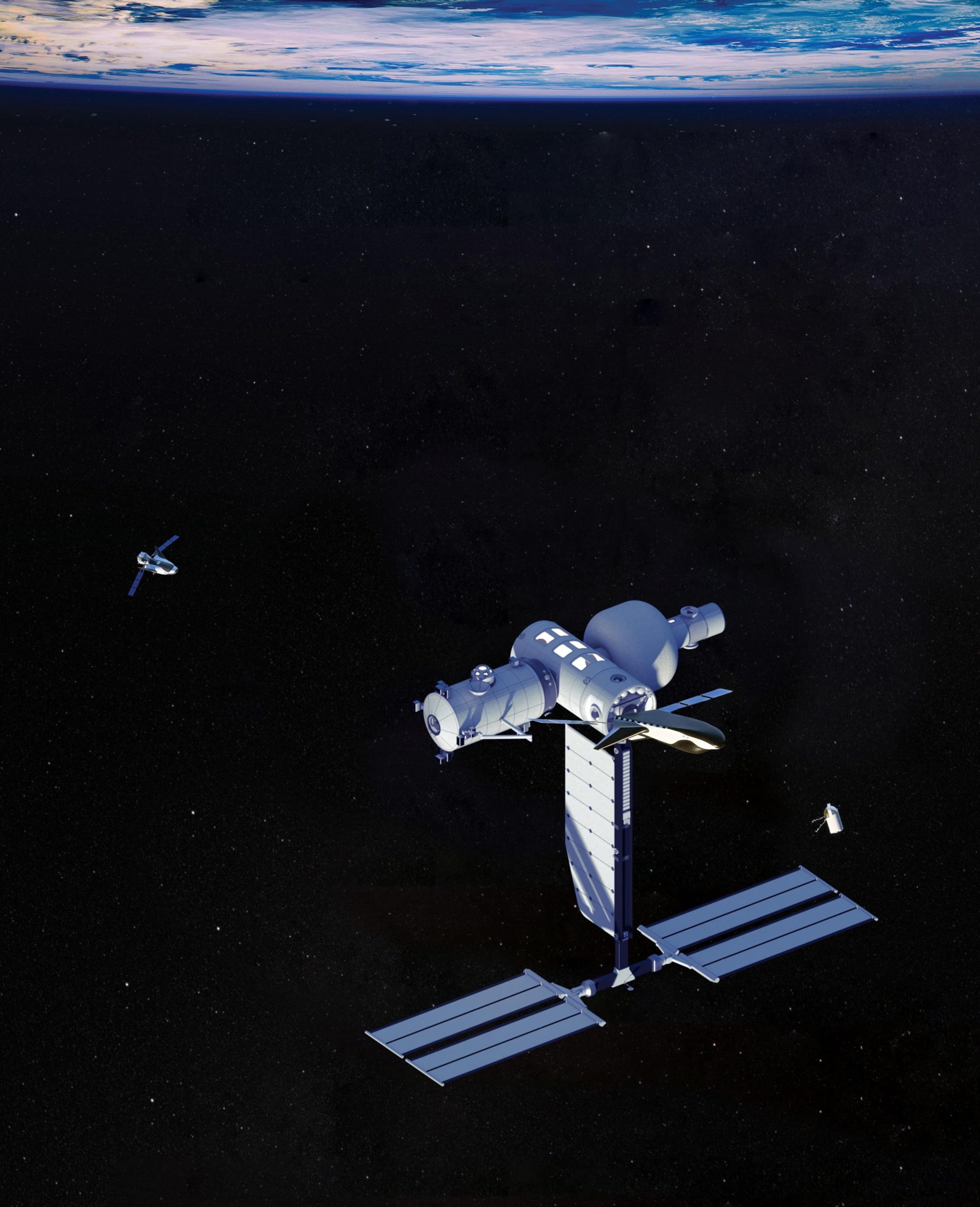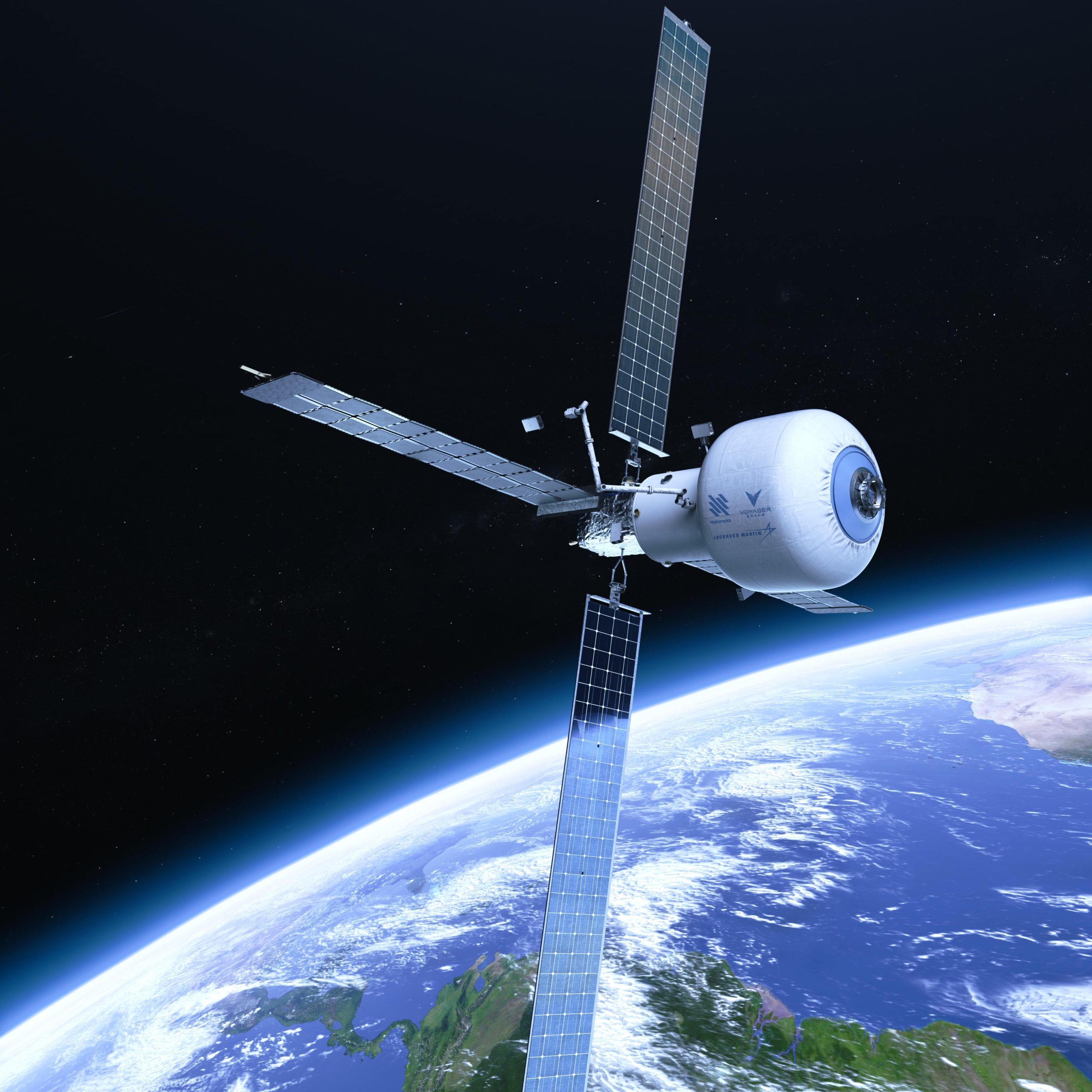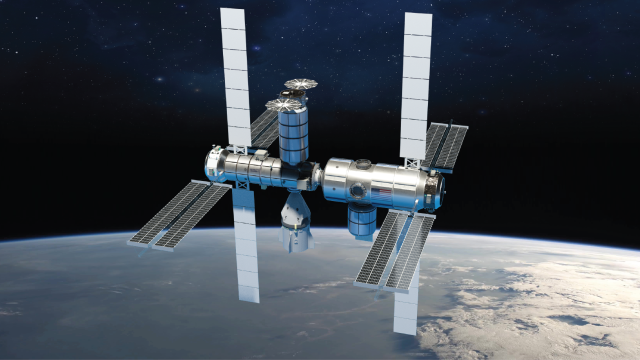NASA has awarded lucrative contracts to three U.S. companies — Blue Origin, Nanoracks, and Northrop Grumman — to develop space station concepts that will serve both public and private interests in space.
With expectations that the 23-year-old International Space Station won’t last beyond the 2020s, NASA is turning to the private sector for help. On December 2, NASA allocated $US415.6 (A$593) million for a trio of Space Act Agreements as part of its Commercial Low Earth Orbit Destinations program. The funds will be distributed fairly evenly (unlike previous contracts), with Blue Origin receiving $US130 (A$185) million, Nanoracks getting $US160 (A$228) million, and Northrop Grumman getting $US125.6 (A$179) million. The three were selected from 11 bids submitted to NASA this past August, as SpaceNews reports.
These companies, in consultation with NASA, will conceptualize and design space stations and “other commercial destinations in space,” according to NASA. This represents the first of two stages for the project, which is expected to end in 2025. For the second phase, NASA will certify its favourite solutions for NASA crew member use and purchase an initial set of services.
The U.S. space agency is seeking to orchestrate a smooth transition from the publicly funded ISS to private solutions and to “enable a robust, American-led commercial economy in low-Earth orbit.” Importantly, future space stations will need to serve both public and private interest in space.

“With commercial companies now providing transportation to low-Earth orbit in place, we are partnering with U.S. companies to develop the space destinations where people can visit, live, and work, enabling NASA to continue forging a path in space for the benefit of humanity while fostering commercial activity in space,” NASA Administrator Bill Nelson said in a statement.
Indeed, low Earth orbit presents a remarkable environment for scientific experimentation, and it’s a stepping stone to further exploration of space, including trips to the Moon and Mars. Space stations are ideal places to train astronauts and for testing new technologies, such as for the upcoming Artemis missions to the Moon (the ISS is where NASA’s upcoming lunar spacesuit will be tested, for example). NASA says its future needs in low Earth orbit “will require continuous accommodations and training for at least two crew members” and an orbital lab for conducting around 200 experiments each year to “to support human research, technology demonstrations, biological and physical science.”
For its part, Blue Origin will be furthering its Orbital Reef concept — a “mixed-use business park” that’s expected to host as many as 10 astronauts. The Jeff Bezos-led company is partnering with Sierra Space, Boeing, Redwire Space, Genesis Engineering, and Arizona State University. Target customers will include “manufacturing, space tourism, pharmaceuticals and any company who can see benefits of being in zero gravity,” as a Sierra Space spokesperson told Gizmodo back in October. Orbital Reef could reach low Earth orbit at some point between 2025 and 2030.

Nanoracks, in partnership with Voyager Space and Lockheed Martin, is working on Starlab — a “continuously crewed, commercial space station dedicated to conducting advanced research, fostering commercial industrial activity, and ensuring continued U.S. presence and leadership in low-Earth orbit,” according to NASA. The Starlab design calls for labs dedicated to biology, plants, science and materials research, and an open work area. It’s meant to accommodate four astronauts, but it can be expanded over time. Launch of Starlab is expected by around 2027.
The unnamed platform from Northrop Grumman will leverage the company’s prior work on its Cygnus spacecraft. Multiple docking stations will enable future expansion, such as added crew habitats, labs, airlocks, and even facilities capable of creating artificial gravity. Dynetics will be helping out with this project.
The timing of these contracts is interesting. A report by NASA’s Office of Inspector General from earlier this week warned of a gap between the end of the ISS and the onset of commercial solutions. The report claimed that, “even if early design maturation is achieved in 2025 — a challenging prospect in itself — a commercial platform is not likely to be ready until well after 2030,” while adding that NASA’s “current timeframe to design and build a human-rated destination platform is unrealistic.”
These alarming predictions suggest NASA waited too long to award these contracts and that a continuous American presence in space could be in jeopardy around the turn of the decade. To complicate matters, sufficient Congressional funding for the Commercial Low Earth Orbit Destinations program is not guaranteed. Quite suddenly, the clock is ticking. Hopefully, NASA and its private partners are up for the challenge.
